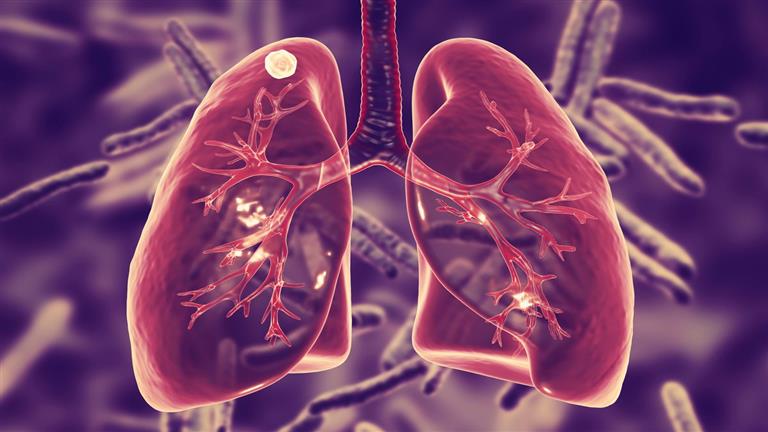21:03
Monday 26 December 2022
I wrote – Asmaa Morsi
Pulmonary tuberculosis is an infection of the lungs that can also spread to other parts of the body, such as the brain and spine. It is a type of Mycobacterium tuberculosis.
Here we mention its causes, some warning signs and symptoms, its types and health complications, as explained by “webmd”.
Types:
1. Latent tuberculosis
It occurs when you have some germs in your body, but your immune system prevents them from spreading, shows no symptoms, and isn’t contagious.
But the infection is still alive and may one day become active.
2. Active tuberculosis
Bacteria and germs multiply rapidly, invading various organs in the body, and the infected person can spread the infection to others.
Some warning signs and symptoms include:
Cough that lasts more than 3 weeks.
Source.
coughing up blood
Feeling tired all the time.
night sweats
chills.
Anorexia.
Weight loss.
If you have any of these symptoms, you should go to a specialist doctor immediately for the necessary tests.
– the reasons:
TB is caused by bacteria that spread in the air, like a cold or the flu, and you can become more susceptible to infection from contact with people who have it.
Risk factors:
You may be more susceptible if:
1. A friend, colleague or family member has active tuberculosis.
2. Live or travel to an area where TB is common, such as Russia, Africa, Eastern Europe, Asia, Latin America and the Caribbean.
3. You work or live with someone who has the infection, including the homeless, people with HIV, people in prison, and people who inject drugs into their veins.
4. Work in a hospital or nursing home.
5. Smoking.
A healthy immune system fights TB bacteria, but you may not be able to prevent it if you have:
HIV or AIDS.
Diabetes.
severe kidney disease;
Head and neck cancers.
Cancer treatments such as chemotherapy.
Low body weight.
Malnutrition.
Taking transplant medications.
Some medicines to treat rheumatoid arthritis, Crohn’s disease and psoriasis
Transmission of tuberculosis
When a person with TB “coughs,” sneezes, talks, or laughs, they release tiny droplets that contain germs and can become infected if inhaled.
TB germs don’t spread on surfaces, and you can’t get it by shaking hands with someone who has the disease or sharing food or drink with them.
– Methods of treatment:
Treatment will depend on the infection:
If you have latent tuberculosis, your doctor will give you medicines to kill the bacteria so the infection doesn’t flare up, such as isoniazid, rifapentine, or rifampin, for up to 9 months.
If you have drug-resistant TB, your doctor may prescribe you one or more different medicines, which you may need to take for a longer period of time, up to 30 months, and which can cause more side effects.
Whatever type of infection you have, it’s important to stop taking all medications when you feel better, and the sooner you stop, the bacteria can become resistant to the medications.
Isoniazid Side Effects:
Numbness and tingling in hands and feet, stomach pain, nausea and vomiting, loss of appetite, feeling weak.
Ethambutol includes:
chills, painful or swollen joints, abdominal pain, nausea, vomiting, loss of appetite, headache.
Pyrazinamide:
lack of energy, vomiting, nausea, loss of appetite, muscle or joint pain.
Health Complications:
joint damage
Lung damage.
Injury or damage to bones, spinal cord, brain, or lymph nodes.
Liver or kidney problems.
Inflammation of the tissues around the heart.
Read also:
Deformed in 90% of cancer patients.. Two signs I feel when I go to the bathroom
A type of tea consumed daily promotes brain and bone health
Discover the “enemy of the kidney”. Beware of putting it in abundance on food without knowing it
Don’t ignore it.. Severe marks in your legs reveal that cholesterol has become a killer
Stop eating bread if you have these 5 signs


